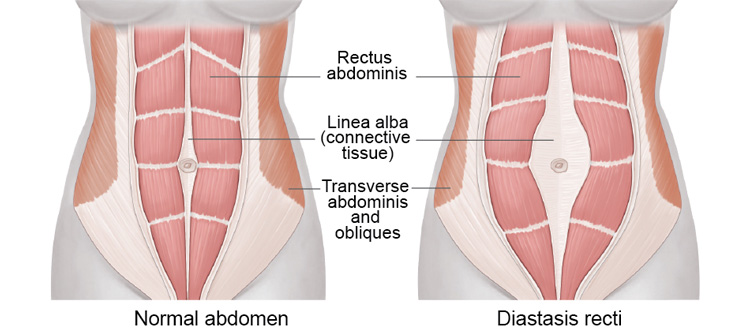Diastasis recti affects many pregnant women after childbirth (approximately 30%). Diastasis recti is normal during pregnancy and usually resolves 4 to 5 months after childbirth. However, certain women still have a swollen belly and protruding abdominal muscles after that period.
While this issue only affects the appearance of the stomach area in certain cases, it can cause complications and become a real condition. Here are the symptoms of diastasis recti.

Everything you need to know about Diastasis recti
Postpartum diastasis recti : what is it and what causes it ?
Diastasis recti refers to a gap or separation of the two parts of the abdominal wall’s main muscle (called rectus abdominis). Those two parts move away from each other because of the uterus getting bigger and bigger during pregnancy, which can result in a noticeable hole on the vertical line separating both parts of the muscle.
In addition to the growth of the uterus, other factors could be involved : genetic predisposition, advanced age as well as a heavy foetus (or twins). Excessive exercise during the last trimester of pregnancy can also cause problems.
Diastasis recti symptoms
As the belly dilates and despite its resistance, it loses elasticity and can struggle to get back to its previous state. 4 to 5 months are necessary for a normal state and for the hole between the two parts of the muscle to disappear.
If this hole does not disappear in this timeframe, diastasis recti becomes a problem on an aesthetic level. It can worsen and cause other troubles such as abdominal and back pain, low back pain, incontinence, nausea, difficulty breathing and digestive problems.
In worst cases, diastasis recti can cause epigastric or abdominal hernias.
When diastasis recti has reached an advanced state, a surgical procedure is usually necessary to repair the muscles. This procedure is called a tummy tuck, or abdominoplasty, and aims at restoring the abdominal wall’s normal state. This procedure involves an incision that will result in a scar similar to a c-section scar.






Laisser un commentaire